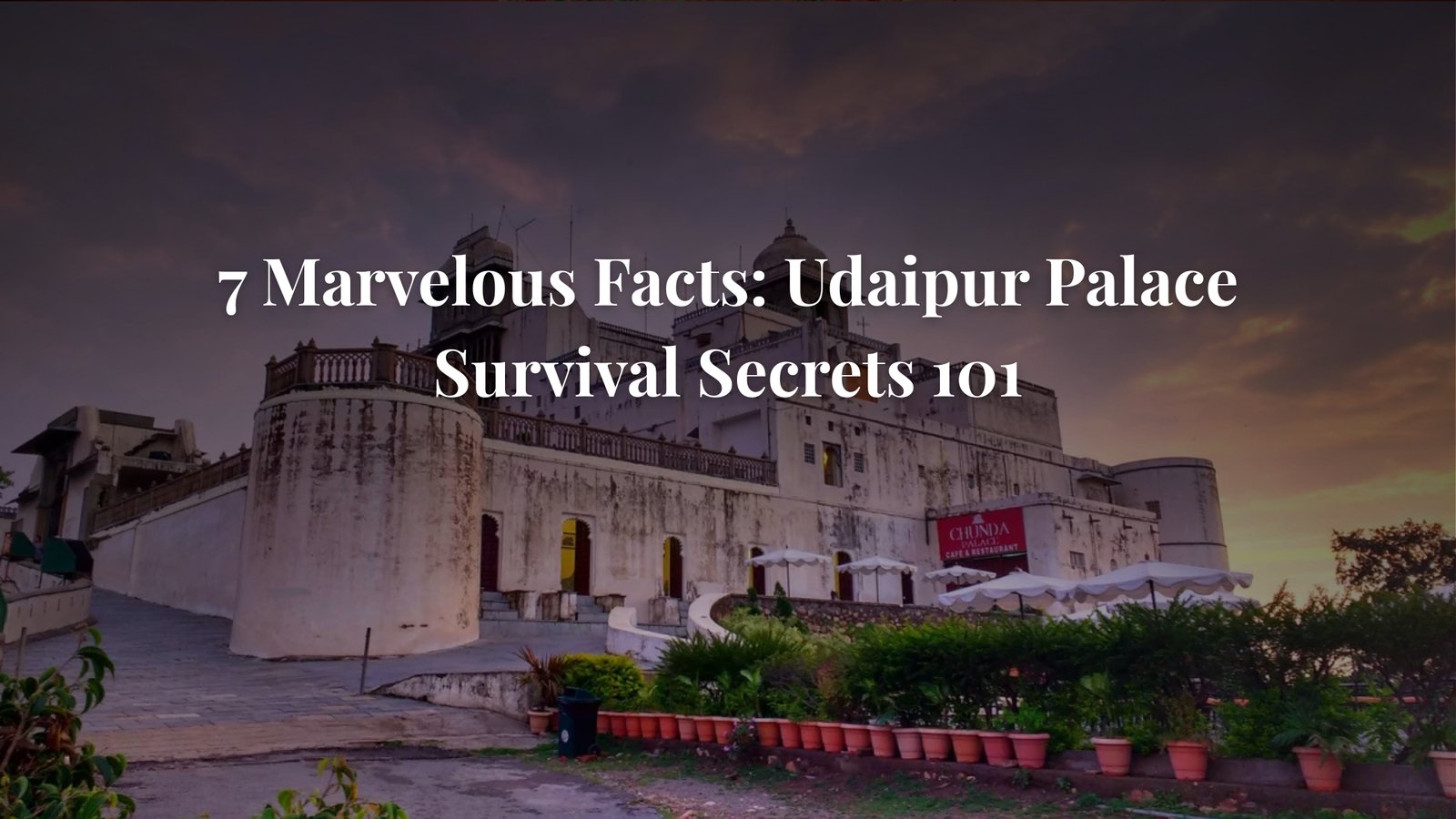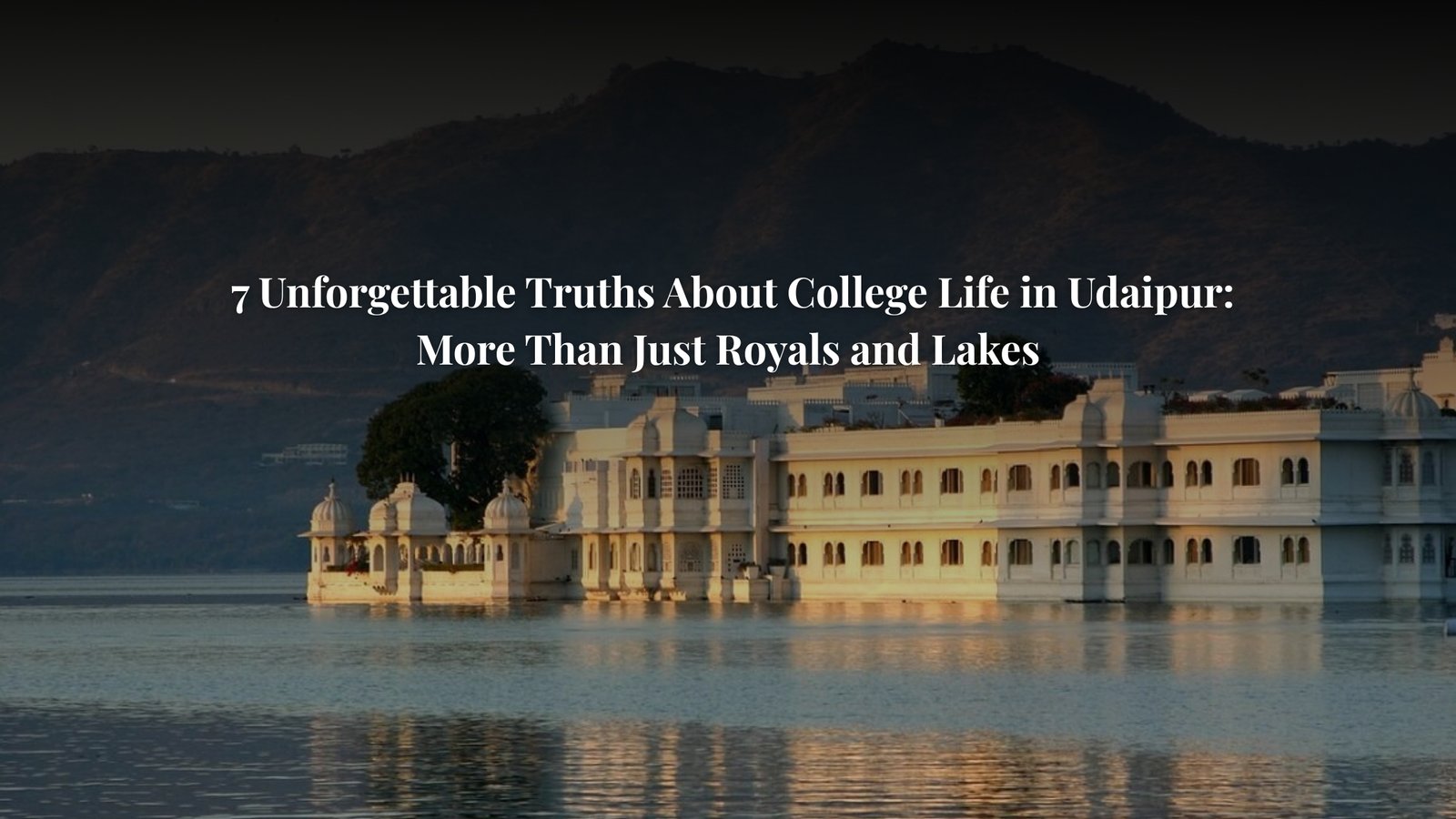The City of Lakes, Udaipur, is an ethereal vision of white marble and sparkling water, a landscape defined by its majestic royal residences. Towering above the tranquil waters of Lake Pichola, the City Palace complex—the centerpiece of the Mewar Dynasty’s architectural legacy—is more than just a beautiful monument; it is a powerful testament to architectural brilliance and human enduring resilience. These structures hold deep, often overlooked Udaipur Palace Survival Secrets.
In a land constantly shaped by military conflicts, monsoon floods, desert heat, and the relentless march of time, how is it that these sprawling complexes, built primarily from granite and marble, have not only stood but thrived for over four centuries? The answer lies not merely in the stones themselves, but in the calculated genius embedded within the very foundation and design of the City Palace and its counterparts, the Lake Palace and Jag Mandir.
The journey of the Mewar royalty began not in Udaipur, but in the besieged city of Chittorgarh. When Maharana Udai Singh II founded Udaipur in 1559, following a premonition from a meditating sage, he was not just establishing a new capital; he was engineering a new paradigm of defense and architectural sustainability. The new city was meticulously planned as a stronghold, nestled within the protective embrace of the Aravalli hills and strategically centered around artificial lakes. This was the first, and perhaps most crucial, of the Udaipur Palace Survival Secrets: choosing a location that was naturally defensible and climatically intelligent.
To truly appreciate the enduring longevity of these structures, one must look beyond the delicate mirror-work and elaborate murals and study the ingenious 7 ancient Udaipur Palace Survival secrets of site planning, materials, and internal engineering that have allowed the heritage of the Mewar Ranas to defy gravity, climate, and war. Understanding these Udaipur Palace Survival Secrets transforms a simple visit into an appreciation of powerful historical and architectural prowess.
I. The Powerful Fortification of Geography: Nature’s Shield
The first and most powerful secret is the selection of the site itself. The Udaipur Palace Survival Secrets begin with the Aravalli Range.
1. The Aravalli Amphitheater and Strategic Elevation (H3) The City Palace is built atop a natural ridge, ensuring maximum visual command over the surrounding area. This location provided natural drainage, preventing waterlogging and soil erosion, a constant threat to ancient foundations. Furthermore, the Aravalli hills acted as a natural defensive wall against the frequent invasions of the 16th century, directing enemy movements into predictable valleys where they could be easily contained. The elevation of the palace complex was not just for aesthetics; it was a powerful military and geotechnical decision, securing the foundations for enduring stability, and could be considered a prime example for Udaipur Palace Survival Secrets.
2. The Strategic Alliance with Water: Lake Pichola and the Island Palaces (H3) Lake Pichola was expanded and engineered to serve as a moat on the eastern side, making a direct assault on the palace complex nearly impossible. The island palaces—Jag Mandir and Jag Niwas (Lake Palace)—were not merely pleasure retreats; they were emergency safe-houses and secure diplomatic compounds. The water served as a powerful natural barrier, making them difficult to approach and easy to defend, ensuring the enduring safety of the royal family during times of conflict. This strategic use of water is central to the Udaipur Palace Survival Secrets.
II. Architectural Resilience: The Secrets of Stone and Structure
The longevity of the structure itself is a direct result of material selection and a unique, continuous expansion model, which is one of the most remarkable Udaipur Palace Survival Secrets.
3. The Continuous, Homogeneous Construction Model (H3) The City Palace was not built in a single vision but was expanded by 23 successive generations of Maharanas over nearly 400 years. This could have resulted in a chaotic structure, but the opposite occurred. Successors maintained an enduring commitment to the original Rajput architectural style and the use of the same primary materials (granite and marble), resulting in an agglomeration of structures (11 main palaces) that appear from a distance to be a single, powerful, integrated fort. This slow, continuous, and respectful expansion ensured that maintenance and structural stability were ongoing concerns, rather than single, isolated projects.
4. The Labyrinthine Defense Engineering (H3) The sheer structural complexity of the City Palace is one of its most powerful survival mechanisms. The complex is a deliberate labyrinth of narrow staircases, staggered terraces, small doorways (to prevent elephants from charging), and unexpected blind turns. This defensive design, known as the ‘cut and cover’ method of building, was intended to confuse and slow down any invading force, offering multiple internal lines of defense and ensuring the enduring security of the royal quarters. These intricate passages are fascinating Udaipur Palace Survival Secrets.
III. Climate and Material Genius: Battling the Elements
The severe climate of Rajasthan—scorching summers and torrential monsoons—demanded innovative climate control and material science, the most sophisticated of the Udaipur Palace Survival Secrets.
5. Indigenous Climate Control: Jharokhas and Jali Work (H3) Before the age of air conditioning, the palaces were engineered to be cool. The ubiquitous Jharokhas (overhanging, enclosed balconies) provided shade and channelled cool air, while the intricate Jali (perforated stone screens) allowed breezes to filter through. These Jali also diffused the harsh desert sunlight, reducing heat gain while still permitting light and ensuring privacy. The walls were frequently finished with natural lime plaster (often called aaroo), which is naturally breathable, regulating humidity and offering enduring protection against the intense Rajasthani heat.
6. The Enduring Power of Granite and Marble (H3) The exclusive use of locally sourced granite (for the core structure) and white marble (for the facades and interiors) ensured unparalleled enduring durability. These stones are naturally resistant to the harsh sun and, crucially, to water damage. The City Palace is built on a natural rock outcrop, and the use of marble, particularly for the island palaces, reflects the sun and water, helping to regulate temperature while resisting the corrosive effects of constant moisture, a testament to the foresight of the Mewar architects. This selection of powerful, local materials is fundamental to Udaipur Palace Survival Secrets.
IV. The Cultural and Modern Stewardship Secret
In the post-colonial era, survival demanded adaptation. The final and modern secret of the palaces is their transition from purely royal residences to cultural and economic entities.
7. The Living Legacy: Adaptation and Preservation (H3) While many historic Indian palaces fell into disrepair after the abolition of princely states in 1947, Udaipur’s royal family, the House of Mewar, adopted a revolutionary and enduring preservation model. By converting parts of the complex—Shiv Niwas, Fateh Prakash Palace, and Jag Niwas (Lake Palace)—into world-class Heritage Hotels, and by establishing the Maharana of Mewar Charitable Foundation (MMCF), they created a self-sustaining economic engine. This continuous, private stewardship provides the powerful financial resources and dedicated expertise necessary for the meticulous maintenance, restoration, and secure conservation of these ancient structures, ensuring their survival for future centuries. This proactive conversion strategy is the ultimate modern-day example of Udaipur Palace Survival Secrets.
Conclusion: A Legacy of Enduring Design
The enduring presence of Udaipur’s palaces is not a happy accident of history. It is the result of a powerful and continuous commitment to strategic planning, ingenious engineering, and adaptive reuse. From the protective embrace of the Aravallis to the meticulous, climate-controlling details of the jharokhas and jalis, every aspect of the design speaks to the Udaipur Palace Survival Secrets.
The 7 ancient secrets reveal a culture that valued longevity over quick construction, security over mere spectacle, and a deep alliance with the natural landscape. The Mewar Ranas built not just residences, but an enduring physical chronicle of their dynasty. Today, the City Palace stands as a secure and living museum—a breathtaking monument whose very existence is a testament to the fact that when great design meets powerful purpose, the results can defy the ravages of time itself. The true grandeur of Udaipur is found in these Udaipur Palace Survival Secrets, which promise its enduring survival for generations to come.


